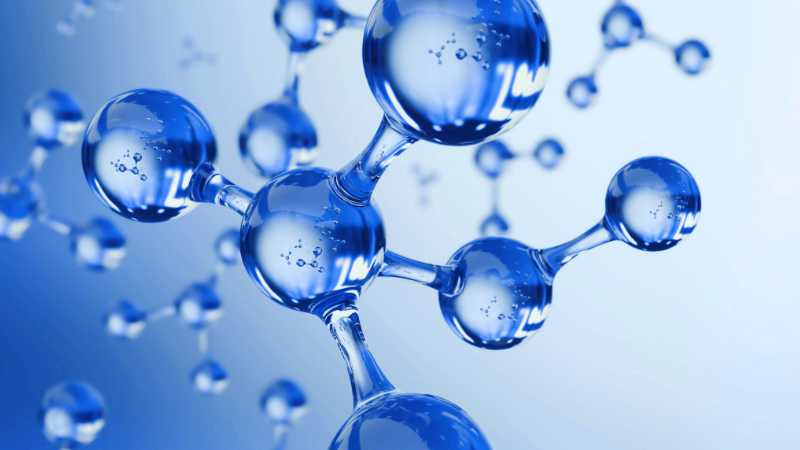
This article will present information on oxidative stress and the use of natural topical antioxidants to promote homeostasis, enhance wound healing, and preventing oxidative damage caused by infection, alteration of microbial flora during medical treatments such as chemotherapy and dental procedures, or by dental materials.
As we enter our second year of the pandemic and various restrictions for Sars-CoV-2 (COVID-19), oxidative stress in the oral cavity has increased exponentially in the public. There are several hypotheses and some preliminary research indicating oral mucositis may occur in COVID-19 patients either because of damage to reactive oxygen species triggered by the virus, or because of opportunistic infections due to dysregulation of the immune system1. Research on the oral effects of mask wearing is currently being conducted.
Oxidation is a natural process that occurs 24 hours per day during normal cellular function. Reactive oxygen species (ROS) are continually produced as byproducts of aerobic metabolism. Oxidative stress occurs when there is a physiological stress on the body that results from an increased production in ROS and a decreased capability in the body's antioxidant defense mechanisms.
ROS are free radicals that are unstable molecules due to a missing electron. They attack other molecules to regain stability by “stealing” one of their electrons. This chain reaction damages molecules, eventually impairs cell function, and potentially causes cell death.
The level of oxidative stress is determined by the balance between the rate at which oxidative damage occurs and the rate it is repaired or removed. Cells are generally able to recover from mild or brief oxidative episodes, but severe stress or prolonged exposure can cause their significant damage or death.
Sources of increased ROS in the oral cavity include bleaching agents, dental cements, implants, alloys, and composite fillings. In addition, lifestyle and environmental factors like tobacco and alcohol use, carbonated drinks, poor nutritional status, and other chemicals and pollutants, contribute to the development of ROS and oral oxidative stress.
Oxidative stress is considered a contributing factor in the development of multiple chronic inflammatory diseases including periodontitis, diabetes, atherosclerosis, rheumatoid arthritis, sickle cell disease, and various types of cancer2.
In addition, there is a suspected link between oxidative stress in oral mucositis and a variety of neurodegenerative disorders including Parkinson's, Alzheimer's, and Lou Gehrig's diseases1. The systemic link between periodontitis and heart disease, rheumatoid arthritis, diabetes, Alzheimer's disease, and obesity has been well established4,5.
Oral mucositis and the formation of ROS in the mucosal tissues of patients with severe cases of COVID-19 has been found and is under current investigation6. Careful assessment of patients who have been diagnosed or had symptoms of COVID-19 should be conducted to address mucositis and other potential issues related to oxidative stress in the oral cavity.
Antioxidants are molecules or compounds that work to prevent cellular damage by inhibiting reactions caused by the oxidation process. They neutralize ROS by donating one of their own electrons. Since antioxidants are stable in either form (with or without a missing electron) they stop the stealing process and help to prevent further cell damage.
Saliva is the oral cavity's first level of defense against oxidative stress. In healthy individuals, the total antioxidant capacity of saliva is normally able to maintain homeostasis by counteracting mild oxidative damage.
When that equilibrium is disturbed by an overabundance of ROS from periodontal disease or other sources, the introduction of additional antioxidants is needed to return the oral cavity to a balanced state. PerioSciences AO ProVantage Gel is a product I use regularly in my practice to address oxidation and reduce ROS.
I will have more on the routine I use in the next article of this series, “Oxidative Stress, Antioxidants and Wound Healing.”
References:
- Riad A, Kassem I, Badrah M, Klugar M. (2020). The manifestation of oral mucositis in COVID‐19 patients: A case‐series. Dermatologic Therapy.
- Valko, M., Leibfritz, D., Mocol, J., Cronin, M. T., Mazur, M. & Telser, J. (2007). Free radicals and antioxidants in normal physiological functions and human disease. The International Journal of Biochemistry & Cell Biology, 39(1), 44-84.
- Patel, V. P., & Chu, C. T. (2011). Nuclear transport, oxidative stress, and neurodegeneration. International Journal of Clinical and Experimental Pathophysiology, 4(3), 215-229.
- Schenkein, H. A., & Loos, B. G. (2013). Inflammatory mechanisms linking periodontal diseases to cardiovascular diseases. Journal of Clinical Periodontology, 40 (Suppl 14), s51-69. doi:10.1111/jcpe.12060
- Uppoor, N. A., Lohi, H. S., & Nayak, D. (2013). Periodontitis and Alzheimer's disease: Oral systemic link still on the rise. Gerodontology, 30(3), 239-42. doi:10.1111/j.1741-2358.2012.00660.x
- Sonis ST. The pathobiology of mucositis. Nat Rev Cancer. 2004;4(4):277-284. doi:10.1038/nrc1318